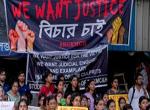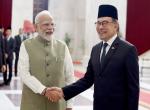Ever since the riots in Gujarat post Godhra the so-called civil rights groups have been gunning for Narendra Modi and the Gujarat Government. The allegation is that the riots which targeted Muslims were instigated and supported by the ruling party, BJP, with encouragement by government which ensured that the administration failed to react positively and suppress the riots. It is alleged that, for example, in Ahmedabad the Police Commissioner allowed politicians, especially two ministers, to take over the Police Control Room, who then prevented the police from taking effective action against the rioters. These groups state that the existing laws do not permit intervention by the Central Government and, therefore, it is necessary to have a new law aimed specifically at communal riots. It is in this context that the National Advisory Council has prepared the draft of a Bill bearing the title “Prevention of Communal and Targeted Violence (Access to Justice and Reparation) Bill 2011”.
At this stage perhaps it is necessary to set the record right and place the post Godhra riots in perspective. Gujarat can be divided into distinct regions, starting with Kuchh and Saurashtra, North Gujarat, including Sabarkantha and Banaskantha Districts, Central and Eastern Gujarat consisting of Ahmedabad, Mehsana, Khera, Baroda, Panchmahals Districts and South Gujarat starting from Bharuch and including Valsad, Navasari and Surat Districts. Even under British rule South, Central and Eastern Gujarat had a history of communal tension. Even in the 2002 riots North Gujarat, Kuchh and Saurashtra remained peaceful, or if there was any trouble the DMs and SPs acted firmly and did not allow an ugly situation to develop. The Police Commissioner of Surat also acted with firmness and with the assistance of the district administration was able to ensure peace. The main problem arose in Ahmedabad, Mehsana, Khera, Baroda and Panchmahals Districts. Incidentally, the worst communal riots in the history of Gujarat occurred during the Congress regime when Hitendra Desai was Chief Minister. Therefore, to target Narendra Modi alone for communal violence in Gujarat flies in the face of the record.
The neighbouring state of Maharashtra has had far more number of incidents of communal riots when the BJP was not in power, but because the object of this paper is to not to make a comparison of guilt, no more than a passing reference is made to this fact. In the explanatory note on key provisions of the proposed Bill prepared on 19th May, 2011, the persons who drafted it define vulnerable groups as consisting of religious and linguistic minorities, scheduled castes and scheduled tribes and go on to state, “ Tragically it is for these very groups that the existing provisions of law fail because of a similar systemic bias in the administrative and criminal justice machinery against these most disadvantaged groups. Thus their vulnerability stands twice enhanced. These are the groups that this Bill seeks to protect”. However, underlying the draft of this Bill is the belief that the Central Government should have the powers to intervene where communal rioting occurs and where the state administration does not react effectively and positively. The constitutional scheme is that under Article 1, “India, that is, Bharat shall be a Union of States”. It is a fact that the Constitution is heavily weighted in favour of the Centre, especially because under Article 248 residuary powers of legislation vest in Parliament. Nevertheless, the Seventh Schedule of the Constitution, which gives the respective jurisdictions of Parliament and the State Legislatures, reinforces the federal structure of India and the autonomy of the States on which the Centre can encroach only at the cost of making federalism weak. Public order and police are within the exclusive legislative competence of the State Legislatures as per Entries 1 and 2 of the State List of the Seventh Schedule.
Both constitutionally and as a practical proposition it is the state administration which is required to maintain order. If the State Police finds itself unequal to the task government can call for assistance from the Central Government by way of making available Central Armed Police Forces. Under List 1 of the Seventh Schedule, Entry 1A, such forces can be deployed in any state in aid of the civil power. The requisition, however, has to come from the State Government and this cannot be altered by a specific law dealing with communal violence. Incidentally, section 130 Cr. P.C. goes further than anything contained in the proposed Bill because any Executive Magistrate may call upon the armed forces of the Union, including the military, to come to his aid in dispersing an unlawful assembly and to restore order. Under the Constitution this power cannot be made available to a federal officer unless under Article 356 of the Constitution the President has issued a proclamation taking over all or any of the functions of the State Government, including law and order. It might be worth mentioning here that the very civil society groups who are pushing this Bill are the ones which have also been the loudest in proclaiming the need for greater state autonomy and have decried the encroachment of the federal government in state affairs. The definitions given in the Bill are such that federal intervention in state affairs is built in if it can even be remotely shown that the law and order situation is targeting a group defined as a minority under the proposed section 3 (e) of the Bill.
If the objective of the Bill is to protect the minorities, then it should have a provision that the minute a so-called communal riot begins the Central Government can step in. This could even be done by invoking Article 356 of the Constitution, clause (1) (a) of which reads, “(The President may) assume to himself all or any of the functions of the Government of a State…” The State Government need not be dismissed nor the legislature dissolved. Only for the limited purpose of restoring order the Executive Magistracy and Police may temporarily come under Central control. The fact is that after the partition of India in 1947 all communal riots have ultimately been suppressed within about a week or ten days, which means that by the time the Centre can step in the riot would have ended, either because of police action by the State or by sheer exhaustion of the rioting parties. In the 80s of the last century Meerut was the prime example of communal riots in which the State Government repeatedly called upon the army for aid. Even in this situation the riots lasted till such time as the Hindus started feeling the pinch of the properties being destroyed and the Muslims the pinch of its community members being killed. At that stage the rioting stopped. If the purpose of this Bill is to allow the Centre to step in, then it does not fulfill this purpose and instead it opens the doors to dangerous interventions which are politically motivated and strike directly at the autonomy of the States.
To come to specifics, the Bill is fundamentally flawed. Section 3 (e) defines a group as a religious or linguistic minority in any State, or scheduled castes and scheduled tribes. All scheduled castes are Hindu for the very simple reason that caste is a function of the Hindu religion only because no other religion recognises the existence of castes. Therefore, to state that a member of the scheduled castes is a minority despite the fact that he may profess the Hindu religion would be a contradiction in terms. That is why there is a special Act called Scheduled Castes and Scheduled Tribes (Prevention of Atrocities) Act. How can this new Bill subsume that Act? On the question of definition, what about the fact that though the Muslims are a minority in the State of Kerala, there are perhaps four districts in the State where they are a majority. This means that despite the fact that within a district the Hindus may be in the minority and prone to attack by the majority community within the district, violence against the Hindus would not be deemed to be communal or targeted violence. One can refer here to the Mapilla riots in the 1920s which specifically targeted Hindus in the then district of Malabar. Would the attack on the train in Godhra really come under the definition of communal violence? Not in the eyes of this Bill.
The Code of Criminal Procedure and the Indian Police Act of 1861 clearly lay down that it is the duty of the police to maintain public order, prevent the commission of offences, disperse unlawful assemblies and use necessary force in order to restore order and tranquility. The Executive Magistracy has a decisive role in this behalf. Nonperformance of duty is also actionable. For example, under section 29 of the Indian Police Act a police officer who fails to do his duty is liable to both imprisonment and a fine. So far as the All India Service officers are concerned, the ultimate cadre controlling authority for IAS and IPS officers is the Central Government and if a member of these Services is guilty of dereliction of duty and the State Government does not take action, the Central Government can always take him on deputation to the Centre and charge-sheet him. We do not need a separate law for this purpose.
The Indian Penal Code already defines and provides for penalty for rioting, giving provocation with intent to causing a riot, promoting enmity between different groups on grounds of religion, race, place of birth, residence, language, etc., doing acts prejudicial to the maintenance of harmony, making any imputation or assertion prejudicial to national integration or imputing that a class of persons, however defined, is working against the integrity of the nation. The Code defines offences against person and property, including causing hurt, committing culpable homicide amounting to murder, wrongful restraint, rape, mischief by arson or otherwise and similar acts which cause hurt to a person or damage to his property. If these provisions of law are not enforced, why is it expected that a new law will lead to better enforcement? If it is a question of the quantum of punishment, then suitable amendments can be brought about in the Indian Penal Code and penalties enhanced if there is a communal riot.
There are major lacunae in the proposed Bill. In the district of Jhabua ninety-four percent of the population is tribal and incidents of attack by non-tribals on tribals are nonexistent. Supposing a tribal group attacks non-tribals? If the magistracy or the police are derelict in their duty does it mean that they will not be called to account because this riot does not fall within the definition of communal violence? Supposing one minority group attacks another? In the Panchmahals District in 2002 Muslims were targeted by the Bhils. Will they be treated as Hindus who attack Muslims or would they be part of one minority group attacking another minority group, thus taking the riot out of the ambit of communal violence? The Bill raises more questions than it answers.
The Bill proposes the setting up of the National Authority for Communal Harmony, Justice and Reparation (National Commission in short). It also provides for setting up of an equivalent State Authority. In both cases the composition of the Authority is a Chairman, Vice Chairman and five other members. At least four of these would have to belong to a group defined under section 3 (e), that is, a minority. In other words, the National Authority and State Authority would be heavily weighted against the majority community, that is, the Hindus. What the Bill virtually states is that a community which comprises about eighty-two percent of the population of India will in perpetuity be deemed to be anti secular, communally oriented, given to violence against the minorities and not to be trusted in any matter relating to the minorities. The Bill could have gone further and stated that no member of a majority community will be appointed to the Executive Magistracy or the police because by definition such a person would be a communalist at heart. The real target of this Bill is not the protection of the minorities. It is a public statement that in this country the majority cannot be trusted to be secular and, therefore, an authority which is weighted in favour of the minorities will decide on all issues relating to inter-communal relations. Have the persons who drafted this Bill completely lost their sanity? Do they expect that the majority community will sit quiet whilst it is tarred with the stigma of communalism? This is a totally unacceptable position in democratic India.
There are any numbers of issues on which one can comment. For example, the District Collector is trusted to assess damage in a natural calamity and to fix compensation. Even under the Delhi Police Act he is the person who determines the cost of employment of additional police, the charges imposed by way collective fine on the inhabitants of a disturbed area and such other matters. It is he who determines the compensation in case of injury by an unlawful assembly. Under the Communal Violence Bill the Collector is not trusted and instead the work has been given to a state and district assessment committee. Which officer serving as a Collector and District Magistrate, Superintendent of Police or Commissioner of Police would ever accept such a situation? The provisions in the Bill are an affront to every D.C., in the country and this reduces the efficacy of the District Administration.
Under Entry 3 of the Seventh Schedule of the Constitution criminal law and criminal procedure are in the Concurrent List. All that is needed is an amendment in the Code of Criminal Procedure whereby under a given set of circumstances, to be prescribed in the amendment, which would include communal violence, the Central Government would acquire the power to give suitable directions to the District Magistrate, the Superintendent of Police or the Commissioner of Police. Virtually this would place the law and order machinery in a district under central control for the period for which a notification is issued under Cr.P.C. Under the Representation of Peoples Act all officers and departments of the State Government dealing with elections come under the direct control of the Election Commission and, therefore, Central control in matters of law and order is feasible under law. If the purpose of the Prevention of Communal Violence Bill is to ensure effective action, prevent and suppress communal violence, then a simple amendment of Cr.P.C. would be adequate, especially if this is accompanied by firm action by the Central Government against All India Service officers serving as DMs and SPs if they are derelict in their duty. If the objective is to humiliate the majority community by dubbing it as the only community capable of communal violence, then the Communal Violence Bill is just fine. Actually it should be scrapped and thrown into the nearest dustbin.
--------------------------------------
Published Date: 5th July, 2011









Post new comment